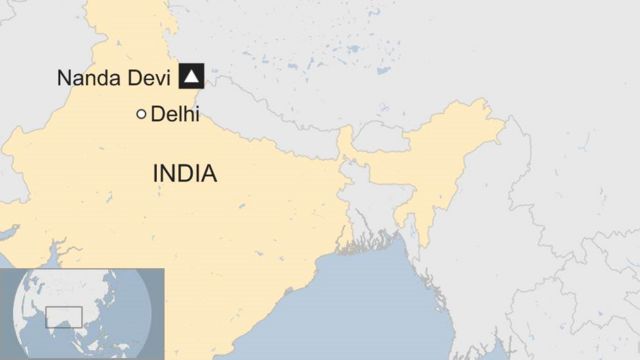Naina Devi Temple

Naina Devi Temple, nestled in the scenic town of Nainital in Uttarakhand, India, is a revered Hindu shrine dedicated to Goddess Naina Devi, believed to be an incarnation of Goddess Parvati. Perched atop the Naina Hill, the temple overlooks the captivating Naini Lake, creating a picturesque setting that combines spiritual serenity with natural beauty.
The temple draws its name from the Sanskrit word “Naina,” meaning eyes, and is associated with the ancient myth of the eye of Goddess Sati falling at this spot. Pilgrims ascend the temple through a series of steps, offering prayers to the deity and seeking her blessings. The vibrant atmosphere during festivals, especially Nanda Ashtami, when the goddess is celebrated with grand processions and rituals, adds to the spiritual vibrancy of the temple. Naina Devi Temple not only serves as a center of religious devotion but also provides panoramic views of the surrounding hills and the shimmering Naini Lake, making it a cherished destination for both pilgrims and tourists alike.
The Naina Devi Temple in Nainital holds a special place in the hearts of devotees and visitors due to its unique architecture and the tranquil setting it occupies. The temple structure showcases a blend of traditional Himalayan and modern styles, making it an architectural gem against the backdrop of the Kumaon Hills. The sanctum houses a black stone idol of Goddess Naina Devi, adorned with intricate jewelry, and devotees believe that paying homage to her fulfills wishes and brings prosperity.
The temple’s strategic location on Naina Hill offers breathtaking views of Nainital town and the emerald Naini Lake below. The Naina Devi Fair, held during the auspicious occasion of Navratri, attracts pilgrims from across the region who participate in the festivities and express their devotion to the goddess.
Legend has it that the temple site holds spiritual significance not only for Hindus but also for Buddhists, as it is believed that Lord Buddha performed meditation at this spot. This amalgamation of Hindu and Buddhist heritage adds to the temple’s cultural richness.
Visitors often take a leisurely stroll around the temple premises, enjoying the serene ambiance and the lush greenery. The Naina Devi Temple stands not only as a religious landmark but also as an embodiment of the harmonious coexistence of spirituality and natural beauty, making it an essential part of the cultural tapestry of Nainital.
The temple’s location near the vibrant Naini Lake, often referred to as the ‘Tririshi Sarovar’ in ancient texts, contributes to the overall charm of the pilgrimage. Pilgrims often combine their visit to the temple with a serene boat ride on the Naini Lake, creating a holistic spiritual and recreational experience.
During the annual Nanda Devi Mela, which takes place in September, the Naina Devi Temple becomes a focal point for cultural celebrations. The festival, dedicated to the goddess and attracting pilgrims and tourists alike, involves processions, traditional music, dance, and a lively fair that adds a festive air to the town.
The Naina Devi Temple’s significance extends beyond religious beliefs, as it has become an integral part of Nainital’s cultural identity. The temple’s architectural beauty, historical connections, and the spiritual aura it exudes make it a must-visit destination for those seeking not only divine blessings but also a connection with the rich cultural heritage of the region.
The Naina Devi Temple is a sacred Hindu temple located in Nainital, Uttarakhand, India. It is dedicated to Goddess Naina Devi, who is considered to be an incarnation of Goddess Parvati. The temple is situated atop the Naina Hill at the northern end of Naini Lake, one of the famous lakes in Nainital.
The temple holds great religious significance and attracts a large number of devotees and tourists. Legend has it that the eyes of Goddess Sati (consort of Lord Shiva) fell at the spot where the temple is situated, and hence the name “Naina,” which means eyes. The word “Devi” refers to goddess.
The Naina Devi Temple has a traditional Kumaoni architectural style and features intricate carvings and sculptures. The idol of Naina Devi is enshrined in the temple, and devotees offer prayers and seek the blessings of the goddess. The temple premises provide panoramic views of Nainital town and the surrounding mountains.
Devotees often visit the temple during auspicious occasions and festivals to pay homage to Goddess Naina Devi. The Naina Devi Fair, celebrated during the Chaitra Navratri festival, is a significant event, attracting a large gathering of pilgrims and tourists. During this fair, various cultural and religious activities take place, adding to the vibrancy of the festivities.
1. What is the Naina Devi Temple famous for?
- Goddess Naina Devi: The temple is dedicated to Goddess Naina Devi, a form of the Hindu goddess Parvati. According to mythology, her eyes fell at the spot where the temple is located, hence the name “Naina,” which means eyes in Hindi.
- Spiritual Significance: Naina Devi Temple holds significant spiritual importance for devotees who visit to seek blessings, offer prayers, and express gratitude to the goddess. It is believed that Goddess Naina Devi fulfills the wishes and prayers of her devotees.
- Scenic Location: The temple is situated atop the Naina Hill, overlooking the scenic Naini Lake. The picturesque setting of the temple amidst the serene natural surroundings adds to its allure and attracts tourists and pilgrims alike.
- Religious Festivals: Various religious festivals and rituals are celebrated at the Naina Devi Temple throughout the year, including Navratri, Nanda Ashtami, and Shravan Ashtami. These festivals draw large crowds of devotees who come to participate in the festivities and seek the blessings of the goddess.
- Historical and Cultural Heritage: The Naina Devi Temple has a rich historical and cultural heritage, dating back to ancient times. It is believed to have been built during the reign of the Kushan dynasty, making it an important landmark in the region’s history.
- Tourist Attraction: Apart from its religious significance, the Naina Devi Temple is a popular tourist attraction in Nainital. Visitors come to admire the temple’s architecture, explore its surroundings, and enjoy panoramic views of the Naini Lake and the town of Nainital from the temple premises.
2. Which district is Naina Devi Temple in?
3. How to visit Naina Devi Temple?
- Travel Planning: Plan your travel to Nainital, which is well-connected by road and rail. You can reach Nainital by bus, train, or private vehicle, depending on your location. Once you reach Nainital, proceed to the Naina Devi Temple.
- Location of the Temple: The Naina Devi Temple is located atop the Naina Hill, overlooking the Naini Lake. It is situated within walking distance from the main town area of Nainital. You can reach the temple by walking or by hiring a taxi or auto-rickshaw.
- Pilgrimage Route: There are several routes to reach the Naina Devi Temple. One common route is to start from the Mall Road in Nainital and walk uphill towards the temple. The path is well-marked, and you’ll pass through the scenic surroundings of Nainital as you ascend towards the temple.
- Ropeway: Another option to reach the Naina Devi Temple is by taking the ropeway (cable car) ride. The ropeway station is located near the Mallital area of Nainital, and it provides a convenient and scenic way to reach the temple. The ropeway offers panoramic views of Nainital and the surrounding hills during the ascent.
- Temple Visit: Upon reaching the Naina Devi Temple, explore the temple complex and offer prayers to the goddess. Take in the spiritual ambiance and soak in the divine atmosphere of the temple. You can also participate in rituals, attend aarti (devotional ceremony), and seek blessings from the deity.
- Return Journey: After visiting the temple, you can descend from the Naina Hill by retracing your steps or taking the ropeway ride back to the Mallital area. Plan your return journey accordingly and arrange for transportation back to your accommodation or onward travel.

